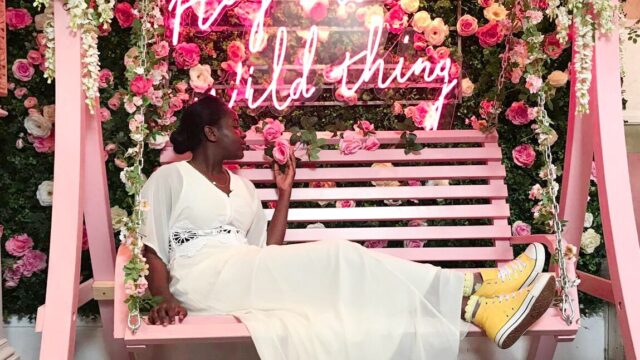Guest blog: How to help young people unearth lived experience (part 3 / 3)
In her final guest blog, Eloïse Malone from our Lonely Not Alone campaign partner, Effervescent, discusses how to help young people unearth their lived experience so you can best connect with audiences through creative campaigns.
- Read part one of Eloïse‘s blog series: What is ‘lived experience’ and why does collaborative creativity make change happen?
- Read part two: Why social action by young people with lived experience is so important

Over the past two blogs, we’ve established that it’s valuable for people with lived experience of painful and isolating situations such as loneliness to share their knowledge with each other, and with the wider world.
We’ve also recognised that traditional methods of researching what people know – such as asking them in a focus group or one-to-one interview – can miss valuable deeper knowledge, which is held in the body or held among a ‘wise crowd’ of people who may not know each other, but have all lived different versions of a unifying experience.
How, then, can we access this insight that helps us communicate with, connect to and create a way forward for people who have been structurally silenced?
For Effervescent, the answer is play and, critically, engaged creative practice.
By ‘critically engaged’, we mean proposing a sequence of tasks, where the group offers creative responses to a question or instruction like: “create an experience using sound and one other sensory element, that describes what xxx feels like.”
We often do this by dividing the group into two or more teams so that each experience has a set of creators and a set of audiences. Once everyone has experienced each other’s work, we use Liz Lerman’s Critical Response Technique to critically analyse:
- What happened?
- What did it make me feel?
- What did I understand about xxx from that?
- What did it remind me of?
- How did it achieve that?
By ‘play’, we mean freely using materials, props, technical equipment and our own bodies to conjure up and play out responses to these stimulus questions.
As we reflect on what we make, we also reflect on how we feel about what we make and why it does that to us. Once we’ve logged all that information and stuck it to the wall, we go again. We divide into a different set of groups and undertake a new thematic task using new props, materials and locations.
Gradually, over cycles of collective play and creation, we find the metaphors, ideas and hidden scraps of information that are buried deep within our collective subconscious as a group … and we stick them on the wall so everyone can see and make collective sense of the insight we are collating.
The vocabulary of play is particularly apposite because ‘playing’ doesn’t suggest that the aim is to be correct; the only principle is to join in and feel free to let go of hierarchies or outside pressure. And creativity is useful because artistic practice is essentially about finding the most arresting, simple and clear expression for a truth.
Once we have enough information on the wall to begin a sifting and selection process we work through the most pertinent and important phrases, images, exchanges as a group and start to boil them down to simple metaphors, propositions and concepts.
Connecting with audiences through art and creativity
“It will be such an amazing and beautiful thing to see people come together and speak about the topic and be able to help another person. It’s about just coming together and even though a lonely person might not want to immediately put themselves out there, they can acknowledge it, they can move on a bit, and still feel a bit better knowing that even if they’re lonely, a hundred million people feel the same way; it’s not just them.” – Alima, 19, Lonely Not Alone co-designer
Play is the natural language of children and young people; it’s how they communicate and make sense of the world. Child psychotherapist Donald Winnicott found that children load some objects with powerful associations and stories, which last into adulthood. In later years, the mere sight or smell of them can produce formidable emotions and thoughts. If we can find those shared symbols and objects, we can help other people find comfort, joy, understanding, and empathy with children and young people living profound and intense experiences, such as loneliness.
Cultural theorist Lynn Froggett has refined this for the community art world with her concept of the aesthetic third.
The aesthetic third is an artwork or artefact that is neither me, nor you. Instead, it sits between us a powerful symbol of what we share and know about a specific subject.
It’s important because, in much social action work, young people end up in documentaries telling their personal stories. This runs the dual risk of ‘othering’ them forward for sympathy, rather than empathy, in the minds of an audience. It can also trap the young person in that identity long after the project is finished – especially if the documentary work ends up on the internet.
When we work together to create beautiful experiences, powerful symbols, and visceral moments for audiences, the audiences are invited to play, too.
Powerful, emotive experiences create profound change and long-lasting presence in audiences’ minds. In advertising, it’s well known that the most emotionally engaging work is twice as effective as factual adverts. It turns out, harnessing children’s natural language of play is the most powerful way to create change in the world.
Lonely Not Alone
For all these reasons, Co-op Foundation and Effervescent are continuing to work together to test and refine collaborative creative social action with children and young adults working on Lonely Not Alone.
In autumn 2021, we’ll launch the third year of our campaign making use of everything we’ve learned. I’ll also start a PhD on methodological innovation in social action and creative coproduction.
Sign up to our Lonely Not Alone newsletter to hear how our work progresses this year. Follow me on LinkedIn for updates on Eff and my work on coproduction innovation.
